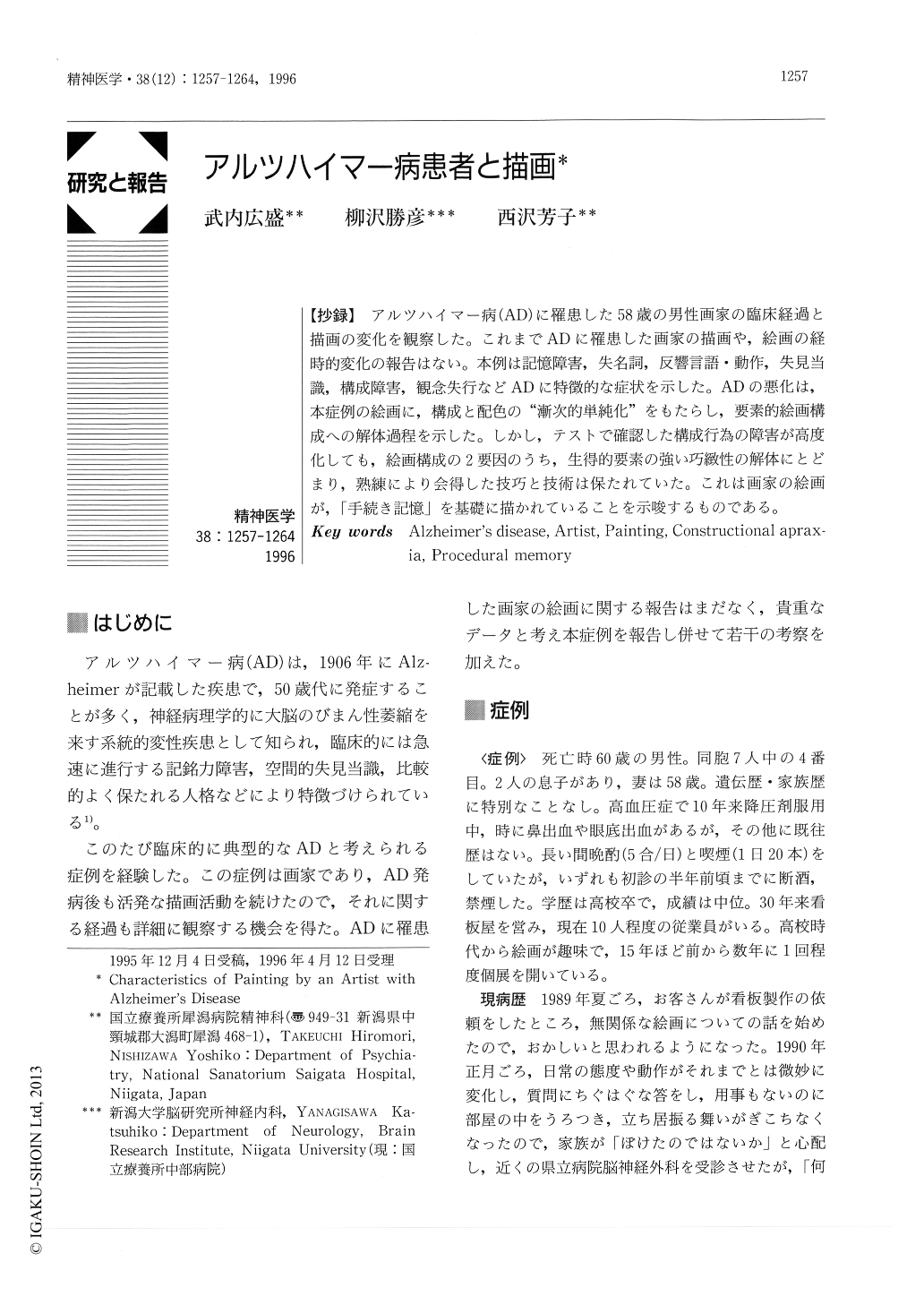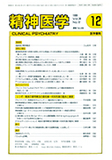Japanese
English
- 有料閲覧
- Abstract 文献概要
- 1ページ目 Look Inside
【抄録】アルツハイマー病(AD)に罹患した58歳の男性画家の臨床経過と描画の変化を観察した。これまでADに罹患した画家の描画や,絵画の経時的変化の報告はない。本例は記憶障害,失名詞,反響言語・動作,失見当識,構成障害,観念失行などADに特徴的な症状を示した。ADの悪化は,本症例の絵画に,構成と配色の“漸次的単純化”をもたらし,要素的絵画構成への解体過程を示した。しかし,テストで確認した構成行為の障害が高度化しても,絵画構成の2要因のうち,生得的要素の強い巧緻性の解体にとどまり,熟練により会得した技巧と技術は保たれていた。これは画家の絵画が,「手続き記憶」を基礎に描かれていることを示唆するものである。
We described a 58-year-old male artist with Alzheimer's disease (AD). He could draw even at the terminal stage of his disease.
His clinical symptoms were amnesia, echolalia and echopraxia, disorientation, constructional disorder, ideational apraxia, and so on.
When his disease was more aggravated, he had constructional disorder. He kept, however, his technique of painting. It suggests that there is a correlationship between pictures of the artist and procedural memory.
In the case of the artist with AD, the worse his disease was, the more childish his paintings became. Thus, his disease caused the loss of hisacquired technique and his innate painting skill.
We think that procedural memory controls the drawing techniques of artists, and it seems to us that the cerebral cortex may have something to do with the tone of his paintings.

Copyright © 1996, Igaku-Shoin Ltd. All rights reserved.


